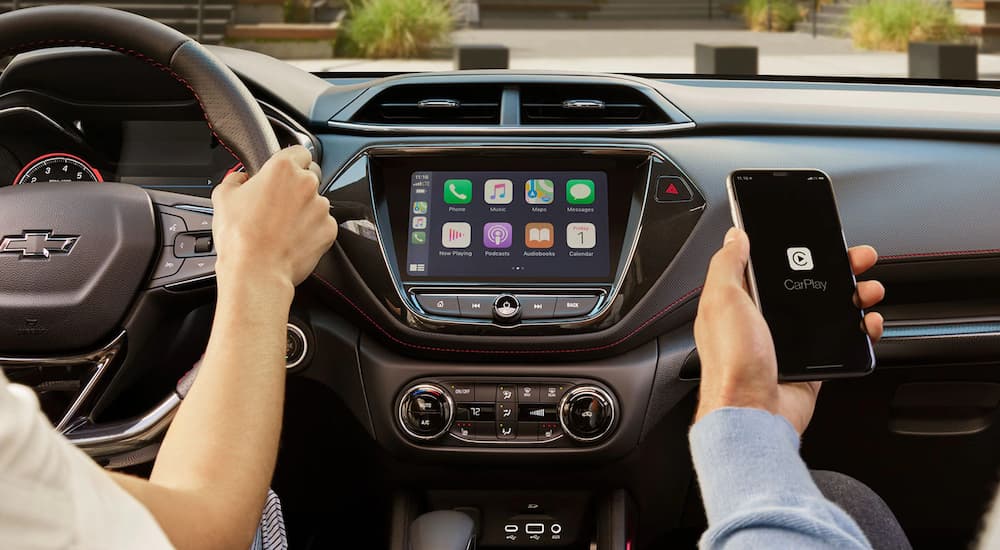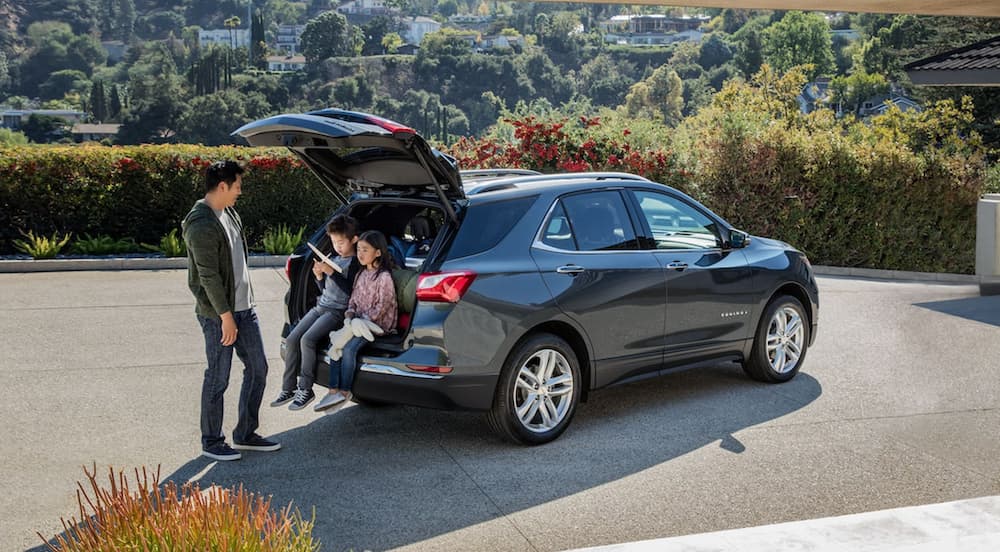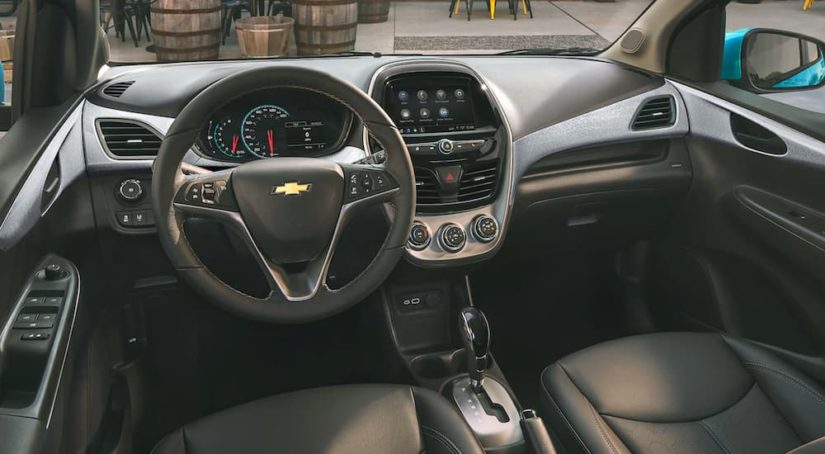Computers, tech, and entertainment coincide with each other in ways that we never thought imaginable. As you know, many different items that we utilize daily were mostly that of analog designs at the start. As technology became more advanced, its industry, which had been separate from that of the automotive market, would begin to cross the lines that originally differentiated the two. Why are we mentioning all of this? Because Chevy has a wide range of automobiles, many of which are fitted with these remarkable features, often coming standard with your purchase. So, when you’re looking around for Chevy dealers, make sure that you study up on what sort of tech that you can expect with the vehicle that you buy. Fortunately, we’re here to give you a rundown on the latest and greatest Chevy tech.
It Started With Radio
Anybody who was born before the 2000s will remember cassette players within the vehicles that they either owned or regularly rode in when they were younger. Those born before that will remember 8-track players that preceded these cassettes. Anybody nowadays knows about CD players, and they are still regularly included with automobiles today. Originally a feature that began slowly appearing in the late 1980s, it has just now been seeing a decline in popularity thanks to the rise of internet streaming apps. If a modern vehicle has a cassette player, it’s because it had been retrofitted in, not an inclusion from the manufacturer. CD players may still be in some of the latest vehicles, but they are quickly being phased out by most manufacturers if they haven’t been already. Plus, that old monochromatic screen with large knobs is something of obscurity nowadays.
The natural progression of this technology is what we’re talking about today, and in many ways, that simple single-colored screen that would display the radio station you’re tuned into is still here today. However, it isn’t a basic and small screen anymore, and in fact, they’re what we now refer to as infotainment centers. On the surface, the infotainment center inside of your vehicle can do everything that your old analog media console could do, and beneath the surface is a wealth of additional possibilities.

Infotainment Starts Here
What does infotainment mean? The name is rather self-explanatory, but not so much if you have little to no idea of how it works. Infotainment is the collective word that describes your vehicle information and entertainment hub. Like most manufacturers, Chevy has a dedicated media system that it implements into its vehicles, and this is called Chevrolet Infotainment 3. As the third iteration of this technology, it will come with a majority of Chevy vehicles on sale today.
What does an infotainment center do that you couldn’t do before? For starters, the infotainment center is essentially a computer at the end of the day. A more fair comparison would be to compare these infotainment centers to consumer-grade tablets like those made by Apple, Amazon, and so on.
The vibrant and colorful screens, often boasting a high definition view, have opened a variety of exciting new possibilities when driving. Screen sizes in Chevy vehicles vary in size, but the most common sizes that you’re likely to see range between 7, 8, and 10.2-inches diagonally. Like the radios that preceded it, you can tune into various stations, whether it be FM or AM. A multitude of Chevy vehicles also offer Satellite Radio in the form of SiriusXM. Another feature that you’ll find in most Chevy vehicles today is Bluetooth, and this is for connecting your smartphone to your car speakers and streaming your music from there. Utilizing your phone to listen to music while driving isn’t anything new, thanks to decades of readily available adapters, but Bluetooth cuts the cord and can be used completely wirelessly.
Third-Party Apps
Manufacturers like Chevy and many more have formed partnerships with tech giants such as Apple and Google, and this is for a good reason. Apple developed software called Apple CarPlay, and Google made one called Android Auto, and you can utilize one of these features as long as you own a smartphone that runs Apple iOS or Android. There are two variations of these two pieces of software, more commonly, you’ll find the standard Apple Carplay and Android Auto, but certain Chevy vehicles offer Wireless Apple CarPlay and Android Auto. Just like Bluetooth, the USB cable can be left at home if you opt for this. But what about charging? Yes, you will still need a USB cable to charge your wireless device, but this isn’t the case if you buy a Chevy vehicle that offers a wireless charging pad for your devices.
When you’re connected to Apple Carplay or Android Auto, you can place your phone in the cupholder or even in your pocket if you have a wireless implementation. Part of the idea behind this is to prevent drivers from using their cellular devices when operating a motor vehicle. How is this accomplished? By connecting your smartphone to the infotainment center, your infotainment center essentially becomes your cell phone while you’re driving. We’re not joking; you can do all of the most important things that your smartphone can do while on the road, from making phone calls or sending a text message. Wouldn’t that still require your attention, you may be asking? With Apple CarPlay and Android Auto, you can do all of this by simply speaking to your virtual assistant that’s integrated directly into the software in your Chevy vehicle.
What else can you do with Apple Carplay and Android Auto? The buck doesn’t stop with phone calls and text messages, as you can utilize your infotainment center to display turn-by-turn navigation, check weather forecasts, and instantly switch between your favorite songs and podcasts. Not happy with the default selection of apps and would rather use one of your preferred apps for navigation or media playback? That’s not going to be a problem because both Apple Carplay and Android Auto feature respective app stores where you can download third-party apps that extend the functionality of your already bustling infotainment center.

Yes, They’re Computers
You could think about this a hundred different ways, but at the end of the day, vehicles are simply more like a computer than ever before. Nowadays, the term ‘engineer’ doesn’t only mean those who design and build the frame of the vehicle and its power throughout, but you also have software engineers who develop the inner working systems. These teams are typically related to the Research and Development side of things, but do you know what else runs software? Computers.
Vehicles being a part computer isn’t a negative thing, mind you. While there can be drawbacks to all of this technology for some people, the overall benefits of these more detailed operating systems are more of a help than a hindrance. The software allows for an incredible amount of versatility that simply couldn’t have been achieved in the vehicles of old.
We’re thrilled at what has been accomplished even in the past five years in the automotive industry, and the next five years are expected to be even crazier, in a good way. While the tech that I’ve mentioned so far is only going to improve with sequential updates, the next step for manufacturers is to complete the race to a mostly omission-free lineup. It will be interesting to see what the future holds in the world of automotive technology.



